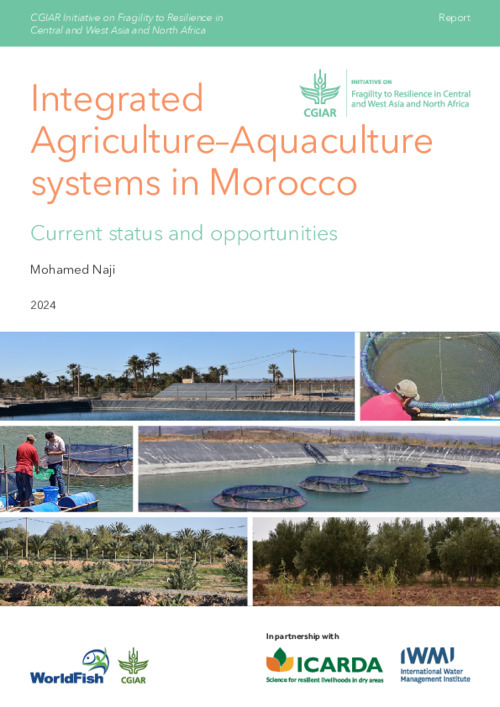Integrated Agriculture–Aquaculture systems in Morocco: Current status and opportunities

Mohamed Naji. 2024. Integrated Agriculture–Aquaculture systems in Morocco: Current status and opportunities. Penang, Malaysia: WorldFish. Report.
Morocco possesses substantial and diverse water resources that support inland fisheries and aquaculture (IFA). While water is relatively available, allocation trade-offs are necessary. Inland fish production is divided into two categories: culture-based fisheries, managed by the National Water and Forest Agency (NWFA) hatcheries, and production aquaculture, operated by the private sector. Private-sector aquaculture produces around 1,000 tons annually, focusing mainly on eel, tilapia, and rainbow trout, with about ten companies involved. A program promoting floating cage aquaculture in dam reservoirs has supported 11 aquaculture cooperatives, with a production capacity exceeding 500 tons annually. Currently, freshwater fish production is dominated by extensive fish farming, driven by restocking operations. NWFA hatcheries produce around 20 million fry annually across all species, resulting in approximately 15,000 tons of freshwater fish per year. Inland aquaculture historically focused on cold-water fish, such as rainbow trout and pike, for restocking natural environments. However, the semi-arid desert climate in much of Morocco necessitates new aquaculture systems that emphasize water conservation, the use of non-conventional water sources, and the integration of aquaculture with agriculture. Hydro-agricultural infrastructures, like dams, irrigation storage basins, and canals, designed for agricultural purposes, offer significant potential for integrated agriculture-aquaculture (IAA) development. Warm-water fish, primarily cyprinids and tilapia, are also important. With the scarcity of freshwater, arbitration between agriculture, household consumption, and industry use is necessary. Conventional aquaculture can exacerbate water usage conflicts, while IAA aligns well with public policies on water resource management.